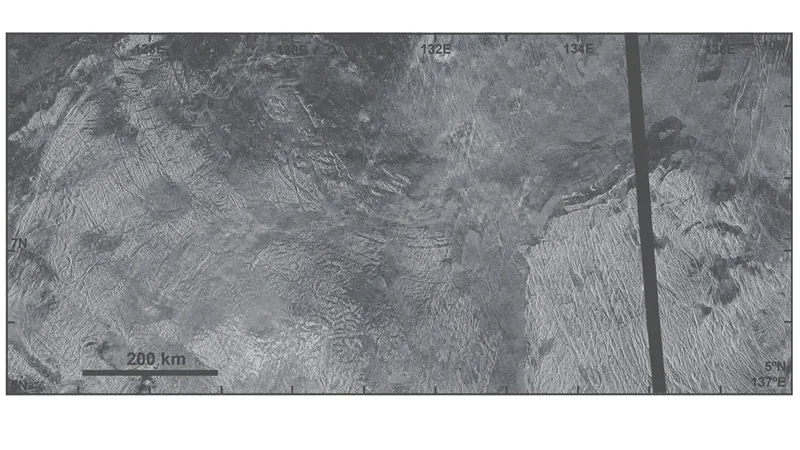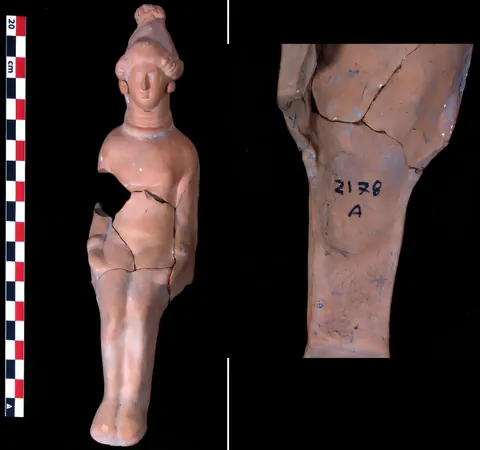
Astonishing New Discoveries Uncover Venus's Hidden Impact Craters!
2024-11-02
Author: John Tan
Astonishing New Discoveries Uncover Venus's Hidden Impact Craters!
Recent astronomical investigations have unveiled surprising revelations about Venus, often dubbed Earth's 'sister planet'. While celestial bodies like the Moon and Mars are familiar to us due to their myriad of craters, Venus has long posed a mystery with its seemingly smooth surface devoid of large impact basins. But a group of researchers may have cracked the code to understanding why this is the case.
Venus, the second planet from the Sun, is a world of stark contrasts compared to Earth. Despite sharing similarities in size and composition, its hellish landscape is marked by scorching temperatures that exceed the boiling point of water, an atmosphere thick enough to crush submarines, and rain made of sulfuric acid. It's a place that no one would want to vacation!
Traditionally, if one were to look down at Venus from space, the thick clouds would obscure any signs of impact craters. Yet, through innovative radar technology, scientists have recently focused on a region called Haastte-baad Tessera, one of the oldest terrains on the planet. Their findings could change our understanding of the planet’s geological history.
The researchers used advanced radar mapping to reveal a set of impressive features: concentric rings stretching over 1,400 kilometers. This discovery suggests that Venus has experienced not just one, but two significant impact events that shaped its surface. Vicki Hansen, a senior scientist from the Planetary Science Institute, likened the process to "pea soup with a scum forming on top," showcasing how the thin layer of crust was formed over molten material.
Long ago, when Venus had a much thinner lithosphere—only about 9 kilometers compared to today's more robust 112 kilometers—it was more susceptible to impacts. When an asteroid or comet struck the planet during its younger years, it likely fractured the lithosphere, allowing lava to ooze out and create the tesserae, the complex patterns observed in the radar images.
Yet, the findings don't stop there. The study also shed light on the curious presence of similar features atop flat plateaus which are believed to have a much thicker lithosphere. The researchers suggest that extreme heat from the mantle can cause partial melting, leading to a phenomenon known as 'residuum', which is strong yet buoyant. Imagine an air mattress floating in a pool of lava—this dynamic could explain the elevation of the tessera terrain in areas previously thought to be stable.
The implications of these discoveries are profound. As we peel back the layers of Venus's history, we’re not just uncovering its geological secrets but also drawing parallels with other planetary bodies in our solar system. This newfound understanding of Venus’s impact craters could provide critical insights into not only the evolution of our neighboring planet but also the processes that govern the formation of terrestrial bodies across the cosmos.
Intrigued by these remarkable findings? The mysteries of Venus are far from solved, and each revelation brings us closer to understanding where we come from and how life as we know it may not be as unique as once thought. Join the exploration!




 Brasil (PT)
Brasil (PT)
 Canada (EN)
Canada (EN)
 Chile (ES)
Chile (ES)
 España (ES)
España (ES)
 France (FR)
France (FR)
 Hong Kong (EN)
Hong Kong (EN)
 Italia (IT)
Italia (IT)
 日本 (JA)
日本 (JA)
 Magyarország (HU)
Magyarország (HU)
 Norge (NO)
Norge (NO)
 Polska (PL)
Polska (PL)
 Schweiz (DE)
Schweiz (DE)
 Singapore (EN)
Singapore (EN)
 Sverige (SV)
Sverige (SV)
 Suomi (FI)
Suomi (FI)
 Türkiye (TR)
Türkiye (TR)